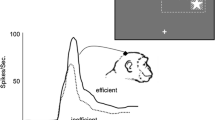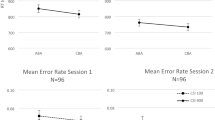Abstract
Reliability parameters of a test indicate the stability (and quality) of the test itself. Reliability coefficients greater than 0.70 suggest an attribute as being sufficiently stable over time to be characterized as a trait. Reliability parameters of contingent negative variation (CNV) amplitudes in 27 healthy individuals were determined using a test-retest design. CNV was recorded at Cz, with an interstimulus interval of 3 s, on 2 separate occasions: initial session and 10 days later. Correlation coefficients between the 2 recording sessions were 0.675 for the total-CNV (tCNV), 0.855 for the early component (iCNV), 0.631 for the late component (lCNV), and 0.420 for the post-imperative negative variation (PINV). Statistical retest parameters for Spearman Brown were 0.806 for tCNV, 0.922 for iCNV, 0.774 for lCNV, and 0.655 for PINV. The iCNV, more than the other parameters, remained stable over the period of 10 days. It is suggested that the described standardized CNV recording procedure ensures reproducible and stable results in healthy subjects.
Similar content being viewed by others
REFERENCES
Abraham, P., Docherty, T. B., Spencer, S. C., Verhey, R. H., Lamers, T. B., Edmonds, P. M., Timsit-Berthier, M., Gerono, A., & Rousseau, J. C. (1980). An international pilot study of CNV in mental illness. In H. H. Kornhuber & R. Deecke (Eds.), Motivation, motor and sensory processes of the brain: electrical potentials, behavior and clinical use. Progress in brain research (Vol. 54; pp. 535-542). Amsterdam: Elsevier, North-Hollands Biomedical Press.
Birbaumer, N., Elbert, T., Canavan, A., & Rockstroh, B. (1990). Slow potentials of the cerebral cortex and behavior. Physiological Review, 70, 1-41.
Boecker, K. B. E., Timsit-Berthier, M., Schoenen, J., & Brunia, C. H. M. (1990). Contingent negative variation in migraine. Headache, 30, 604-609.
Cohen, R. (1990). Event-related potentials and cognitive dysfunction in schizophrenia. In H. Häfner & W. F. Gattaz (Eds.), Search for the causes of schizophrenia (pp. 342-360). Berlin: Springer.
Gerber, W. D., Kropp, P., & Weber, P. (1992). Contingent negative variation (CNV) in migraine: Which components differentiate between normals and migraine patients? In K. Ekbom, W. D. Gerber, P. Henry, & G. Nappi (Eds.), European Headache Federation (EHF). The 1st international conference. Munich: Arcis.
Haagh, S. A. V. M., & Brunia, C. H. M. (1985). Anticipatory response-relevant muscle activity, CNV amplitude and simple reaction time. Electroencephalography and Clinical Neurophysiology, 61, 30-39.
Jasper, H. H. (1958). The ten-twenty electrode system of the International Federation. Electroencephalography and Clinical Neurophysiology, 20, 371-375.
Kinnear P. R., & Gray, C. D. (1997). SPSS for windows made simple. East Sussex: Psychology Press, Publishers.
Kropp, P., & Gerber, W. D. (1995). Contingent negative variation during migraine attack and interval: Evidence of normalization of slow cortical potentials during the attack. Cephalalgia, 15, 123-128.
Kropp, P., & Gerber, W. D. (1998). Prediction of migraine attacks using a slow cortical potential, the contingent negative variation. Neuroscience Letters, 257, 73-76.
Lacey, J. I., & Lacey, B. C. (1970). Some autonomic-central nervous system interrelationsships. In P. Black. (Ed.), Physiological correlates of emotion (pp. 205-228). New York, Academic Press.
Leifer, L. J., Otto, D. A., Hart, S. G., & Huff, E. M. (1976). Slow potential correlates of predictive behavior during a complex learning task. In W. C. McCallum and J. R. Knott (Eds.), The responsive brain (pp. 65-70). Bristol: Wright.
Loveless, N. (1979). Event-related slow potentials of the brain as expressions of orienting function. In H. D. Kimmel, E. H. VanOlst, & J. Orlebeke (Eds.), The orienting reflex in humans (pp. 77-100). Hillsdale: L. Erlbaum.
MacKay, W., & Bonnet, M. (1990). CNV, stretch reflex and reaction time correlates of preparation for movement direction and force. Electroencephalography and Clinical Neurophysiology, 76, 47-62.
Näätänen, R., & Merisalo, A. (1977). Expectancy and preparation in simple reaction time. In S. Dornie (Ed.), Attention and performance (pp. 115-138). Hillsdale, IL: Erlbaum.
Regan, D. (1989). Electrical activity that precedes motor action. In D. Regan (Ed.), Human brain electrophysiology: Evoked potentials and evoked magnetic fields in science and medicine (pp. 217-227). New York: Elsevier.
Roth, W. T., Kopell, B. S., Tinklenberg, J. R., Huntsberger G. E., & Kraemer, H. C. (1975). Reliability of the contingent negative variation and the auditory evoked potential. Electroencephalography and Clinical Neurophysiology, 38, 45-50.
Siniatchkin, M., Hierundar, A., Kropp, P., Kuhnert, R., Gerber, W. D., & Stephani, U. (2000). Self-regulation of slow cortical potentials in children with migraine: an explorative study. Applied Psychophysiology and Biofeedback, 25, 15-34.
Spearman, C. (1910). Correlation calculated from faulty data. British Journal of Psychology, 3, 281-288.
Tecce, J. J. (1972). Contingent negative variation (CNV) and psychological processes in man. Psychological Bulletin, 77, 73-108.
Timsit-Berthier, M. (1993). Contingent negative variation and its relationships to arousal and stress in psychopathology. In W. C. McCallum & S. H. Curry (Eds.), Slow potential changes in the human brain (pp. 219-227). New York: Plenum Press.
Timsit-Berthier, M., Gerono, A., & Rousseau, J. C. (1980). CNV and functional state changes during long-lasting and repetitive recording sessions. In H. H. Kornhuber & I. Deecke (Eds.), Progress in brain research, vol. 54: Motivation, motor and sensory processes of the brain: Electrical potentials, behavior and clinical use (pp. 673-681). North-Holland: Elsevier.
Walter, W. G., Cooper, R., Aldridge, V. J., McCallum, W. C., & Winter, A. L. (1964). Contingent negative variation: An electric sign of sensorimotor association and expectancy on the human brain. Nature, 203, 380-384.
Author information
Authors and Affiliations
Rights and permissions
About this article
Cite this article
Kropp, P., Kiewitt, A., Göbel, H. et al. Reliability and Stability of Contingent Negative Variation. Appl Psychophysiol Biofeedback 25, 33–41 (2000). https://doi.org/10.1023/A:1009533405695
Issue Date:
DOI: https://doi.org/10.1023/A:1009533405695




